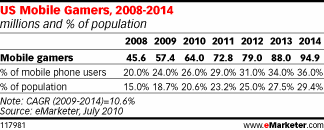Preloaded applications and features are an important consideration in consumers’ choice of an operator and their cell phone, according to a new study by iGR Research. In addition, apps that are popular with consumers could potentially generate 9.4 times the revenue for the operator if they come preloaded vs. being offered in the app store.
In the iGR study, which queried 2,000 users, two-thirds of respondents said that pre-installed apps factored into their device purchase decision. And of those respondents that were smartphone users, about 80 percent said that the types and quality of the applications in the app store were important. The majority of smartphone users also said that they considered pre-installed apps when they bought their smartphone even though they had access to apps in an app store.
Interestingly, the study also found that preloaded applications play an important role in application discovery–48 percent said that they tried preloaded applications on their phone, while 33 percent said they heard about apps from friends and family and 26 percent said they browse the app stores.
The most popular apps that consumers want preloaded are maps/navigation/GPS (64 percent), call control applications such as caller ID and call blocking (49 percent) and music applications (46 percent).
The iGR study also found that just 5 percent of respondents have unlocked their cellular phone so they could get access to apps that aren’t available to them.
The iGR study follows a similar conclusion by ABI Research. In April, ABI predicted that popular applications will increasingly be preloaded on mobile devices and that social networking apps in particular will be preloaded.
Source : iGR Research














